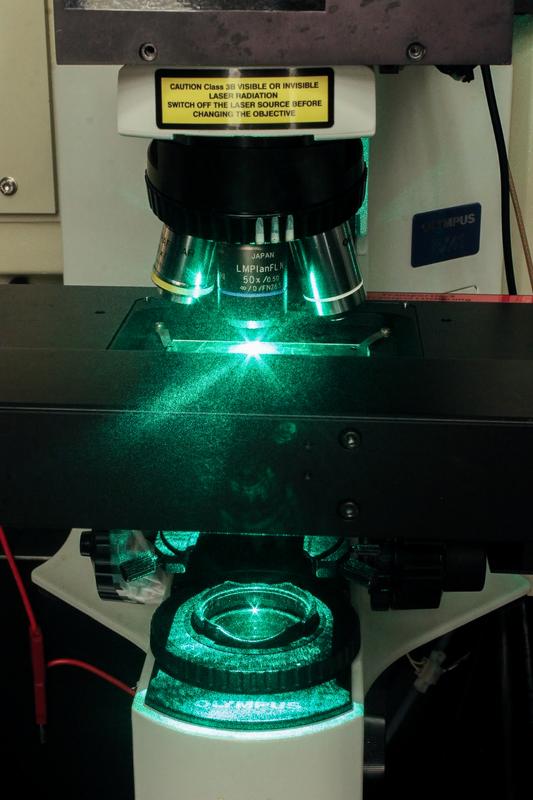Characterizing microplastics in water bodies

New research project at Jacobs University Bremen: The research group of Dr. Arnulf Materny wants to analyze microplastics and their properties using laser technology. Arnulf Materny
The pollution of seas, lakes and rivers with plastic waste is a major environmental problem. Over time, objects made of plastics are mechanically broken down into their smallest particles, which can then be found all over the world as microplastics.
How toxic are these particles?
The research group of Dr. Arnulf Materny, Professor of Chemical Physics at Jacobs University, wants to develop a method that allows the rapid analysis of these tiny particles and their properties – using laser technology.
Via the food chain, microplastic particles, which can be smaller than a thousandth of a millimeter, are becoming a health risk for humans. Inflammatory reactions caused by microplastics embedded in tissue have already been observed. Consequences, such as the development of cancer, are feared.
In a project funded by the German Federal Ministry for Economic Affairs and Energy, Prof. Materny's research group will investigate a very important aspect of the microplastics problem in cooperation with different industrial and research partners from Germany and Finland.
Synthetic materials, and thus microplastic particles, accumulate biofilms on their surfaces relatively quickly in water. These consist of algae and bacteria, for example, but multi-resistant germs have also already been observed.
Apart from the possible additional hazard posed by the microorganisms or bound toxic substances on the surfaces, other aspects are also of interest. On the one hand, the biofilms lead to microplastic particles being considered food by marine organisms such as fish and are therefore ingested even more often. On the other hand, the biofilm could also lead to a more rapid degradation of the plastic, thereby having a positive effect.
Using the Raman spectroscopy, the biofilms and their interaction with the microplastic particles will be analyzed. Laser light is scattered from the surfaces of the particles. Due to an interaction of the light with the biofilm molecules a color shift of the light spectrum occurs. This is then used to determine molecular properties. The work group will use special Raman techniques, which will both suppress interfering signals and amplify the signals.
Dr. Patrice Donfack will carry out the work in Materny’s group in collaboration with the other project partners. The aim is to create an analysis system that will also enable other scientists or authorities to better assess the microplastic problem and to quickly identify current stresses.
About Jacobs University Bremen:
Studying in an international community. Obtaining a qualification to work on responsible tasks in a digitized and globalized society. Learning, researching and teaching across academic disciplines and countries. Strengthening people and markets with innovative solutions and advanced training programs. This is what Jacobs University Bremen stands for.
Established as a private, English-medium campus university in Germany in 2001, it is continuously achieving top results in national and international university rankings. Its more than 1,500 students come from more than 120 countries with around 80% having relocated to Germany for their studies. Jacobs University’s research projects are funded by the German Research Foundation or the EU Research and Innovation program as well as by globally leading companies.
For more information: www.jacobs-university.de
Facebook | Youtube | Twitter | Instagram | Weibo
Prof. Dr. Arnulf Materny
Professor of Chemical Physics
Email: a.materny@jacobs-university.de
Media Contact
All latest news from the category: Life Sciences and Chemistry
Articles and reports from the Life Sciences and chemistry area deal with applied and basic research into modern biology, chemistry and human medicine.
Valuable information can be found on a range of life sciences fields including bacteriology, biochemistry, bionics, bioinformatics, biophysics, biotechnology, genetics, geobotany, human biology, marine biology, microbiology, molecular biology, cellular biology, zoology, bioinorganic chemistry, microchemistry and environmental chemistry.
Newest articles

Pinpointing hydrogen isotopes in titanium hydride nanofilms
Although it is the smallest and lightest atom, hydrogen can have a big impact by infiltrating other materials and affecting their properties, such as superconductivity and metal-insulator-transitions. Now, researchers from…

A new way of entangling light and sound
For a wide variety of emerging quantum technologies, such as secure quantum communications and quantum computing, quantum entanglement is a prerequisite. Scientists at the Max-Planck-Institute for the Science of Light…

Telescope for NASA’s Roman Mission complete, delivered to Goddard
NASA’s Nancy Grace Roman Space Telescope is one giant step closer to unlocking the mysteries of the universe. The mission has now received its final major delivery: the Optical Telescope…



